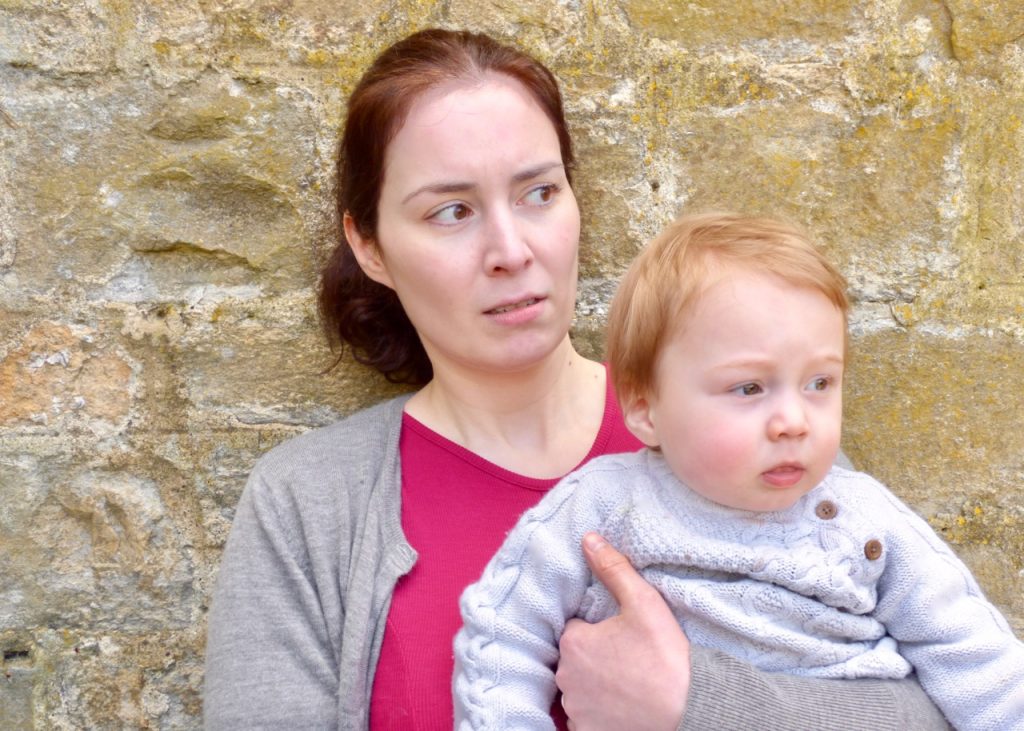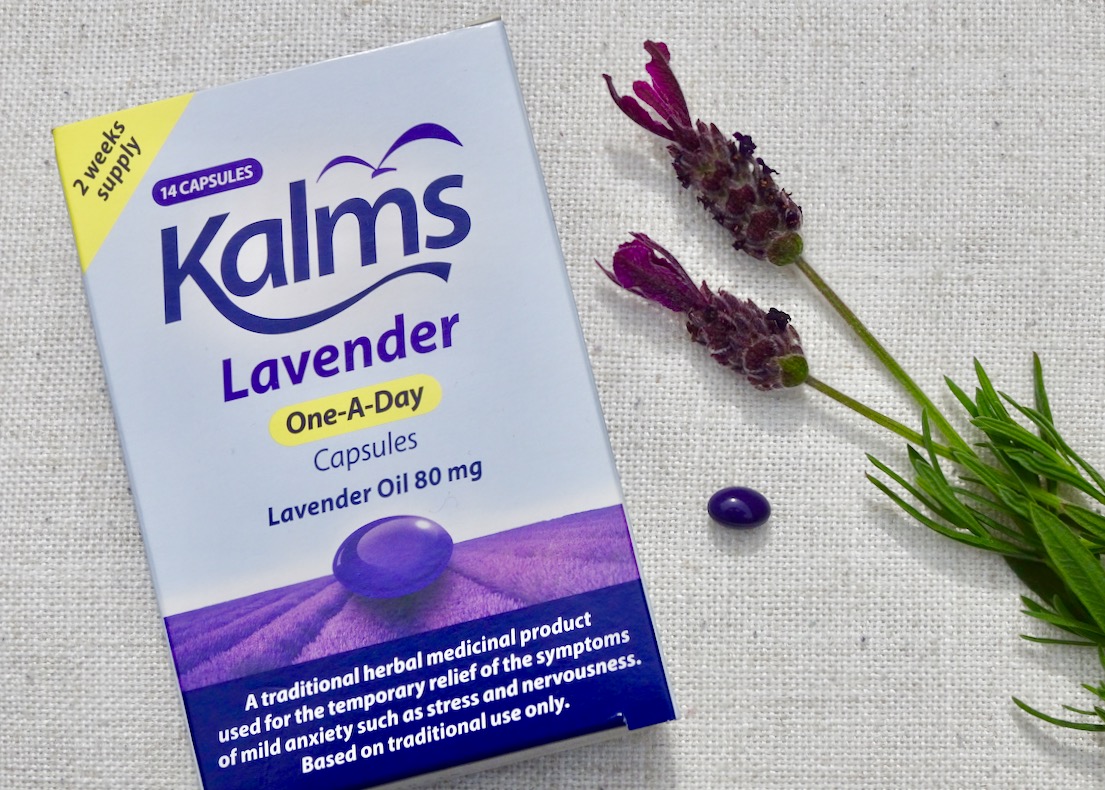How to Spot Anxiety And Stop It | Featuring Kalms Lavender

AD / THIS POST IS COMMISSIONED BY KALMS LAVENDER. ALL WORDING & OPINION EXPRESSED IS MY OWN, NOT OF THE BRAND.
Anxiety is something we can all experience at one time or another. It’s actually pretty normal, but sometimes, especially when life gets challenging, persistent anxious thinking can escalate into acute anxiety issues or chronic anxiety disorders, as well as general physical ill health. So, knowing how to identify when you’re mentally unwell can help stop anxiety in its tracks.
Anxiety is a completely normal human reaction to life’s events. If we didn’t have moments of feeling anxious, our bodies wouldn’t know how to react in immediate situations – it’s our subconscious response; the split decision triggered by the fight, flight, freeze stress that drives our adrenaline when we need it most. What isn’t normal about anxiety is how it affects your life, and if you’re struggling to get through the day and failing to function normally, it may be time for some self care.
I’ve often shared my journey through motherhood (so far) while struggling with an anxiety disorder so writing this post explaining a bit more about anxiety seemed fitting. I know only too well the feeling of shame and guilt after having an explosive anxiety episode, and at times I feel like my son will grow up thinking I’m a monster at best, and at worst, hate me.
My therapist would tell me that the very same fight, flight, freeze effect that generates my meltdowns served us well back when we were hunter gatherers. But nowadays, anxiety doesn’t tend to serve us any useful purpose. Oh how I can testify to that.

What causes anxiety?
Anxiety is often triggered by current life issues or situations arising beyond our control or whereby we feel have no control over: financial problems, the loss of someone close, loneliness or isolation, working long hours.
For myself, it was the effect of two life altering events that presented severe anxiety. Triggered by the experience of a physical assault when I was 16, I struggled for several years with chronic anxiety (alongside agoraphobia and post traumatic stress) and then more recently, following childbirth only two years ago, I was diagnosed with generalised anxiety disorder, which means my anxiety manifests because of anything and affects my daily life in a severe way.
More commonly in milder, short term anxiety, it may just be one issue that’s causing a huge amount worry, whether that be your upcoming wedding or an impending driving test. Whatever the cause of your period of anxiety, when anxious thoughts and the physical effects of anxiety take over your day to day life and begin to control your ability to think rationally, it isn’t right, and it’s time to get some help.
As someone who’s needed clinical treatment through prescriptive medication and professional therapy, I know anxiety is too complex to believe willing a mental illness away will work. Sometimes, you need professional help (and that’s okay.) But there are steps and proven methods that can help control anxiety, and even stop short term cases of anxiety in its tracks.

How to Spot Anxiety
Anxiety Signs
Anxiety manifests through a range of symptoms, both mental and physical, which just proves how this mental illness isn’t ‘all in the mind’.
Take note of how you’re feeling. Have you been unusually grumpy or short tempered lately? Are you waking a lot at night? Maybe you keep breaking down in tears when you feel stressed? Signs of anxiety include mood swings, depressive episodes, sleep deprivation or insomnia, nausea, a racing heart, headaches and muscular pains can all leave you feeling on edge and burned out.
Anxiety Triggers
Knowing typical triggers of anxiety is key to spotting and stopping anxiety in its tracks. Triggers are experiences that heighten your emotions or senses and increase your vulnerability to an anxiety episode or meltdown. When my intensive therapy came to an end I was tasked with writing my own GAD Prevention Plan, which is a personal action plan for monitoring your own anxiety risk. A part of this plan includes the topic of personal triggers – this may be experiencing stressful circumstances such as an exam or awaiting that dreaded appointment, or it could be when you’re driving somewhere new, or you’re in pain or working too many hours. Once you’re aware of your own potential triggers of anxiety, it increases your awareness of the possibility of anxiety rousing and helps you spot the signs should they arise.
Anxiety Behaviour
Particular negative behaviours can pave the way for anxiety episodes and relapses. It may be easier to identify these unhelpful thoughts and behaviour if you’re prone to periods of anxiety, but if you spend a little time thinking about your current behaviour, you may be able to spot a pattern of negative action that’s characterising your anxiety.
In my GAD prevention plan, I recognised many ways my anxiety was being created, even perpetuated. Cancelling plans and avoiding going places (particularly places that made me feel stressed), overthinking and mulling over what someone’s said, even certain phrases I’d repeatedly say such as “I can’t do this” or “help me” are unhelpful behaviours I still do without realising. Sometimes it takes you to sit back and analyse what you do and look at how you respond to events to really see the bigger picture anxiety paints.

How to Treat Anxiety
Anxiety isn’t experienced the same for one person to the next, so treatment is widely varied. While prescriptive drugs and CBT are the best answer for some sufferers, for milder cases of anxiety, self help tools can be equally beneficial.
Breathing techniques and practicing mindfulness can really help train the brain to focus and filter out unnecessary mind junk. GPs and mental health therapists alike recommend downloading mindfulness apps to help you easily incorporate the refocussing methods into your day to day life.
Physical exercise is encouraged as it eases the physical symptoms associated with anxiety while burning the built up adrenaline that anxiety can create.
And natural herbal remedies are worth considering too. It’s long been known that the scent of lavender has a calming effect, so it comes as no surprise it’s now in pharmaceutical form for treating stress and anxiety. Containing lavender oil, Kalms Lavender has been proven in clinical trials to alleviate the effects of anxiety, by reducing the overstimulation of nerve cells that cause anxiety’s symptoms.
The Next Step
So what do I suggest you do next? Be completely honest with yourself and speak up. I swear I could not have carried on fighting my anxiety without the help of my doctors, therapists and of course my husband who is with me through the thick of it. If you’re despairing, go see your GP. Anxiety can be pushed back, your brain can be retrained out of the anxiety loop and whichever methods you try, keep persevering and don’t doubt that when your head tells you you can’t do this, you jolly well can.


Leave a Reply